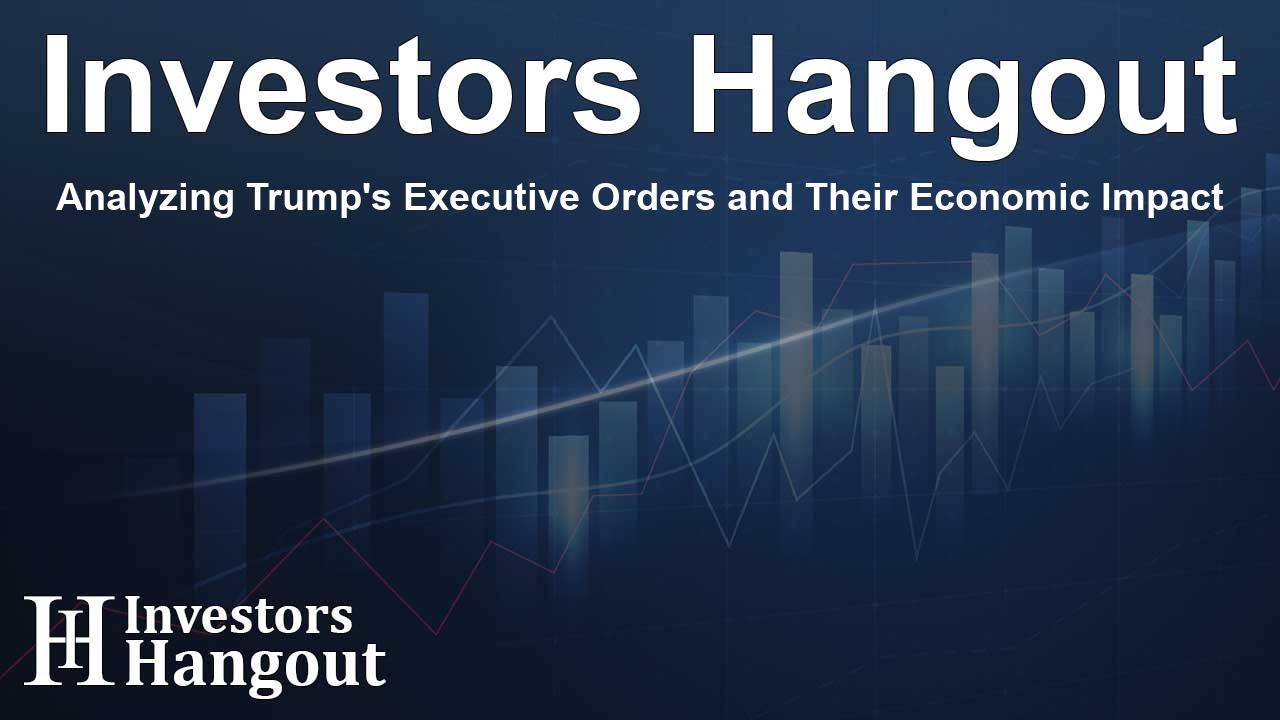Analyzing Trump's Executive Orders and Their Economic Impact

Executive Orders: A Shift in Economic Paradigms
President Trump has taken significant steps by issuing a number of executive orders that have raised eyebrows among economists and market analysts alike. According to market expert Louis Navellier, this approach can be characterized as 'shock and awe'. It reflects a bold strategy that could reshape various aspects of the economy, especially in terms of immigration and tariffs.
Tariffs and International Trade Tensions
The implications of Trump's tariff strategy, particularly regarding China, are still unfolding. There is a looming possibility for new tariffs to emerge soon, which could initiate negotiations with other countries involved. This uncertainty has weighed heavily on currencies like the British pound, Canadian dollar, and Mexican peso, driving their values down against the robust U.S. dollar.
Impact on North American Trade Relations
Notably, if the Trump Administration's satisfaction regarding undocumented migration and fentanyl trafficking is not met, there could be a 25% tariff imposed on both Canada and Mexico as soon as the first day of the next month. This looming deadline has prompted diplomatic negotiations as both Canadian and Mexican delegations vie for a favorable outcome before tariffs are potentially enforced.
Strategic Address at the World Economic Forum
As President Trump prepares to address an influential audience at the World Economic Forum in Davos, discussions of his trade policies will be in the spotlight. His speech is anticipated to cover not only tariffs but also geopolitical issues, such as the ongoing conflict between Russia and Ukraine, showcasing America's stance in the international arena.
Environmental Policy Changes
Among the numerous executive actions, one notable move was withdrawing the U.S. from the Paris Climate Accord. While this decision sent ripples through the environmental advocacy community, reactions from global platforms like the World Economic Forum have been notably subdued. Coinciding with his environmental shifts, the President has pushed for increased production of natural gas and advances in crude oil exploration to bolster domestic energy independence.
Economic Sentiment Indicators and Implications
While U.S. policies are taking center stage, European economic indicators tell a different story. The ZEW Indicator of Economic Sentiment in Germany has shown a drop, signaling apprehension in the economy after two years of contraction. With upcoming elections, this sentiment may significantly shift, making future projections even more unpredictable.
Technological Advancements in the Automotive Industry
Shifting focus, the automotive sector is embracing technological innovations as companies adapt to new landscapes. Toyota (NYSE: TM) has opted for Nvidia's (NASDAQ: NVDA) Orin chip, marking a leap into the future of driver assistance features. This progressive approach underscores the importance of artificial intelligence in enhancing vehicle capabilities, and Toyota is not alone; other automotive leaders like BYD and Mercedez Benz are also joining in on this technological revolution.
Frequently Asked Questions
What executive orders has President Trump issued recently?
President Trump's recent executive orders include significant policies impacting tariffs, immigration, and energy production.
How do tariffs on Canadian and Mexican goods impact the economy?
The potential tariffs could lead to higher prices for consumers, trade tensions, and a decrease in the value of the Canadian and Mexican currencies.
What was the response to the U.S. withdrawal from the Paris Climate Accord?
The international reaction, especially from forums like the World Economic Forum, has been rather muted, reflecting a complex global climate debate.
How is the automotive industry adapting to technological changes?
Companies like Toyota and Nvidia are leading the charge in integrating AI technology into vehicles, enhancing driver assistance systems significantly.
What’s the significance of the ZEW Indicator for Germany?
The ZEW Indicator is crucial as it reflects future economic sentiment, influencing investment and policy decisions in Germany and the broader Eurozone.
About The Author
Contact Kelly Martin privately here. Or send an email with ATTN: Kelly Martin as the subject to contact@investorshangout.com.
About Investors Hangout
Investors Hangout is a leading online stock forum for financial discussion and learning, offering a wide range of free tools and resources. It draws in traders of all levels, who exchange market knowledge, investigate trading tactics, and keep an eye on industry developments in real time. Featuring financial articles, stock message boards, quotes, charts, company profiles, and live news updates. Through cooperative learning and a wealth of informational resources, it helps users from novices creating their first portfolios to experts honing their techniques. Join Investors Hangout today: https://investorshangout.com/
The content of this article is based on factual, publicly available information and does not represent legal, financial, or investment advice. Investors Hangout does not offer financial advice, and the author is not a licensed financial advisor. Consult a qualified advisor before making any financial or investment decisions based on this article. This article should not be considered advice to purchase, sell, or hold any securities or other investments. If any of the material provided here is inaccurate, please contact us for corrections.
